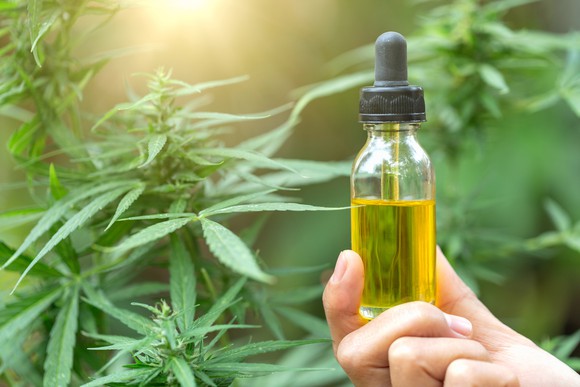Putting aside the growing pains that the marijuana industry has encountered over the past year, it's still expected to be one of the fastest-growing industries on the planet over the next decade. Though estimates are all over the board, Wall Street is looking for annual weed sales to catapult from $10.9 billion in 2018 to between $50 billion and $200 billion worldwide on an annual basis by 2030. This is why North American pot companies have aggressively expanded their capacity, and why investors piled into marijuana stocks over the years.
However, not all growth in the marijuana space is necessarily the same. Statistics show that there are certain demographics that cannabis companies are going to want to pay especially close attention to. In fact, there's one marijuana-use statistic that stands head and shoulders above the rest.

Image source: Getty Images.
The one cannabis-use statistic you need to know
In July 2019, Gallup released its latest breakdown regarding what percentage of Americans smoke marijuana. Considering that a record-tying 66% of Americans want to see marijuana legalized, and the U.S. is projected to be the largest cannabis market in the world by annual sales, the data contained within this national survey is invaluable to weed-based companies.
Though the confidential national usage rate has remained fairly steady between 2015 and 2019 (it was 12% in 2019), it was the age breakdown of the usage statistics that cannabis CEOs are really eyeing. When broken down by age, the 2019 marijuana-use rate in the U.S. was as follows:
- Age 18 to 29: 22%
- Age 30 to 49: 11%
- Age 50 to 64: 12%
- Age 65+: 3%
On one hand, there's no surprise here that older Americans are less likely to be regular cannabis users. Seniors have historically had a more adverse view of cannabis than younger adults, so this data provides even more evidence to this fact.
But what really stands out is just how many younger adults regularly use marijuana. Based on this survey, young adults are pretty much twice as likely as millennials, Gen X, and late-born boomers to use cannabis products. Not only does this mean that younger adults are the future and would-be focus on the marijuana industry, but it's important to note that young adults are also considerably more likely to use higher-margin derivatives, such as edibles, vapes, and infused beverages, than older adults. This makes younger consumers an important cog to the future profitability of cannabis stocks.

Image source: Getty Images.
Investors will want to know these three derivative-focused marijuana stocks
While there's no doubt that every single marijuana stock throughout North America will be focused on producing a number of high-margin derivatives targeted at this burgeoning younger base of consumers, there's a trio of names you'll want to follow especially closely when it comes to derivative production.
In my view, it's basically a no-brainer to consider extraction-services companies, such as MediPharm Labs (MEDIF +0.97%), The Valens Company (VLNCF +0.00%), or Neptune Wellness Solutions (NEPT +0.00%). These are companies that take cannabis and hemp biomass and process it to yield the resins, distillates, concentrates, and targeted cannabinoids used in the production of high-margin derivatives. Not to mention, extraction-service companies may also offer white-label service and production, thereby reaching the consumer on a more direct basis.
MediPharm Labs and Valens are both solely focused on the Canadian market, which has shown similar marijuana-use rates among younger adults. MediPharm should ultimately have 500,000 kilos of peak annual processing capacity, with Valens aiming for 1 million kilos per year on a run-rate basis. The thing is, both companies began processing hemp and cannabis biomass a little over a year ago, but they're already generating no-nonsense profits on a quarterly basis, without the aid of one-time benefits.
If you want a more U.S.-focused processor, then Neptune Wellness Solutions would be the better choice. Through its acquisition of SugarLeaf in 2019, Neptune boosted its peak annual run-rate processing capacity from 200,000 kilos (in Canada) to about 1.5 million kilos. SugarLeaf's 24,000-square-foot facility in North Carolina should be a long-term boon for Neptune.
While growers do provide a more direct investment opportunity in the cannabis space, extraction companies are at the heart of the derivative movement -- a movement that speaks loudest to young adults.

Image source: Getty Images.
Yes, there are short-term risks associated with derivative pot products
On one hand, there's little doubt that derivatives are going to represent a major growth driver for North American cannabis companies over the long run, and that young consumers are the future of the cannabis industry. But this doesn't mean that there aren't risks in the short term.
In Canada, supply issues have, and will continue to be, a persistent problem. Since traditional cannabis flower sales commenced in our neighbor to the north on Oct. 17, 2018, supply shortages and/or bottlenecks have been ongoing. These supply problems have been especially notable in Ontario, the country's most-populous province. Having initially operated with a retail license lottery system, Ontario only opened 24 dispensaries by Oct. 17, 2019, the one-year anniversary of recreational weed sales. That's approximately one store per 604,000 people, which is far too few for a province of its size. Even with changes in place, it'll be a while before there are sufficient retail channels in place throughout Ontario (and Canada) to reach consumers.
Meanwhile, in the U.S., high tax rates in select recreationally legal states have made it virtually impossible for legal producers to compete with black-market products. For example, California, the largest marijuana market in the world by annual sales, saw its cannabis revenue decline by $500 million in 2018, the year that adult-use weed sales commenced. Since derivatives sport even higher price points than traditional dried flower, the gap in pricing with black-market products is even more pronounced.
While there are resolutions to the issues the North American cannabis industry is contending with, it's going to take time for these fixes to take shape. That means patience is needed by investors as marijuana companies work through these early stage growing pains.
